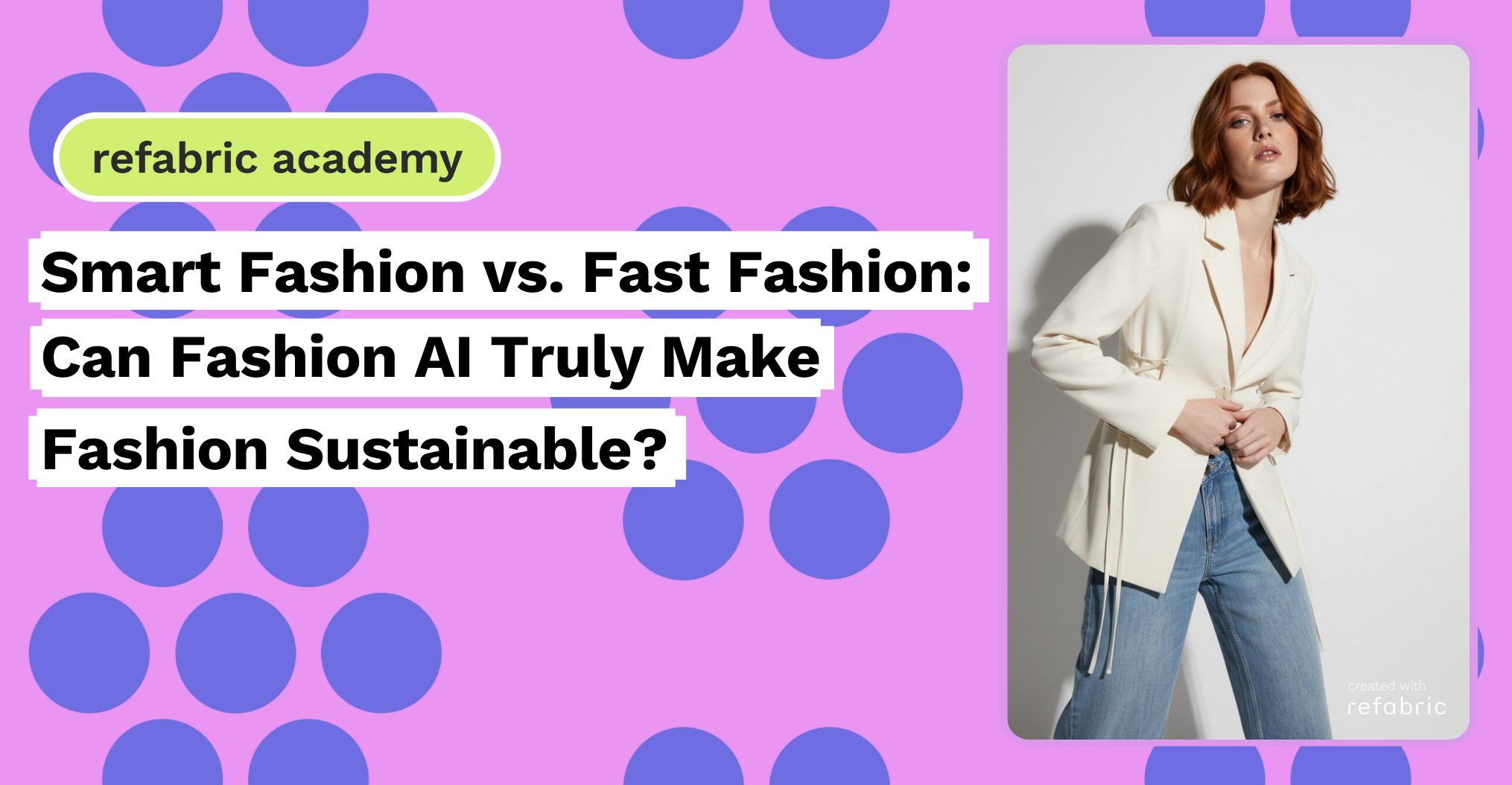Fashion AI has brought a new dimension to reinvention, but in recent years the pace has become almost impossible to sustain. Fast fashion transformed the industry by cutting design-to-shelf time down to just 15 days, chasing every viral look. Yet, the result is staggering: more than 100 billion garments produced each year, and billions left unsold. Behind every trend lies a serious question: how can the industry stay fast without falling deeper into waste?
The answer may not be to slow down, but to get smarter. Welcome to the era of Smart Fashion, where fashion AI tools are shaping the way we think about creativity, production, and responsibility.
Fast Fashion’s Limits in a Trend-Driven World
From TikTok-driven micro-trends to the non-stop buzz of fashion week, designers and brands are under pressure to deliver more collections, faster than ever. But the traditional fast fashion model struggles here:
- Huge warehouses filled with unsold items
- Wasted samples and fabric
- Designs based on guesswork instead of data
- Production cycles that lag behind viral fashion trends.
This system isn’t built for a digital-first generation where trends rise and fall in weeks, not seasons. Consumers now expect instant access, personalization, and sustainability, demands that fast fashion can’t keep pace with. The gap between what the industry produces and what the market truly wants is only widening.
The Rise of Fashion AI Design
This is where fashion AI design comes in. Instead of chasing trends reactively, brands can now anticipate demand and create with precision. Platforms like Refabric enable designers to:
- Transform a sketch or moodboard into dozens of fully realized designs in minutes
- Test different styles against consumer insights and past performance
- Preview collections on diverse fashion AI models before production
- Generate ecommerce-ready visuals without expensive photo shoots
By combining creativity with data, fashion AI tools replace uncertainty with agility, giving designers the freedom to experiment without the cost of waste.
Fashion Big vs. Fashion Wise
For years, the focus was on fashion big: producing as much as possible, as quickly as possible. But the future belongs to fashion wise, workflows that are fast yet thoughtful. Smart Fashion doesn’t kill speed; it redefines it with purpose. When a brand can move from idea to digital sample in a day, while also cutting down on overproduction, that’s not just innovation that’s survival in a market shaped by environmental urgency and shifting consumer values.
Sustainability Starts at Design
Sustainability isn’t only about fabrics; it begins at the design stage. With fashion AI design, brands can eliminate unnecessary sampling rounds, avoid producing items that won’t sell, and use resources more effectively. Regulations are only accelerating this shift: the EU will ban the destruction of unsold stock by 2026, while California will require detailed recycling plans by 2030.
Smart Fashion helps brands prepare for this future today.
Fashion Week, Reinvented by Fashion AI
Think about fashion week. For decades, it has been the place where designers reveal their vision months in advance. But in the age of fashion AI, those timelines are shrinking. Collections can be ideated, tested, and visualized in days, making the gap between runway and reality far smaller. For brands, this means staying not only relevant but also responsible.
Final Thoughts: Fashion Got Fast. Now It’s Time to Get Smart.
The conversation is no longer just fast fashion vs. slow fashion. It’s about Smart Fashion, an approach powered by fashion AI design that balances creativity with sustainability. From viral fashion trends to the spectacle of fashion week, the tools now exist to keep pace with culture without repeating the waste of the past. Fashion doesn’t need to abandon speed; it needs to embrace smarter systems. Because the future of fashion isn’t just about what we wear, it’s about how we make it.
